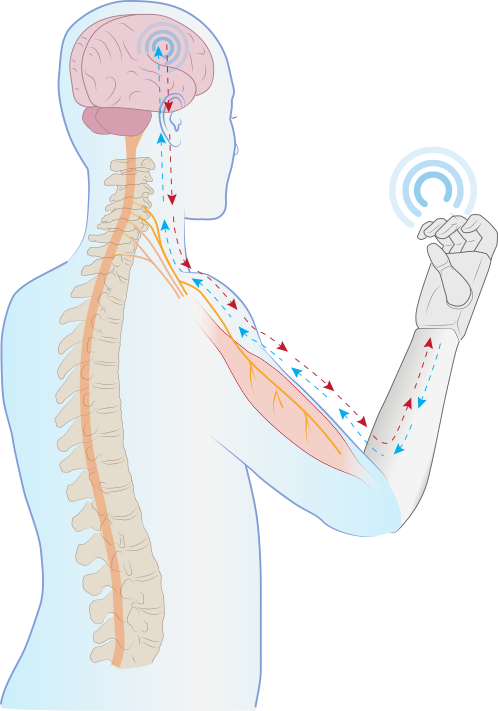Upper Limb Prosthetics
The last decade has seen a range of advancements in upper limb prosthetics. Myoelectric prostheses are the current state of the art, and interpret what movements people want to make by measuring and decoding muscle signals at the surface of the skin. While these devices partially restore hand movements, current myoelectric prostheses do not provide sensation. Together with prosthesis users and other stakeholders, our work aims to increase what people can achieve with their prosthetics.

Sensory information from our hands provides information on where our hands are, and the objects we interact with. Sensory information also plays a role when learning new movements and skills. The importance of our hands in providing us that information is highlighted by the fact that our hands only account for 2% of total body surface, while they comprise 15% of tactile fibres. The project 'Sensory feedback for upper limb prosthetics' aims to enhance prosthetic ability through the integration of optimised sensory feedback at every stage of prosthetic use. The project is funded by Science Foundation Ireland through the SFI-IRC Pathway Programme, and will be completed by Felix Jarto and Dr Sigrid Dupan.
_CMYK-1.png)